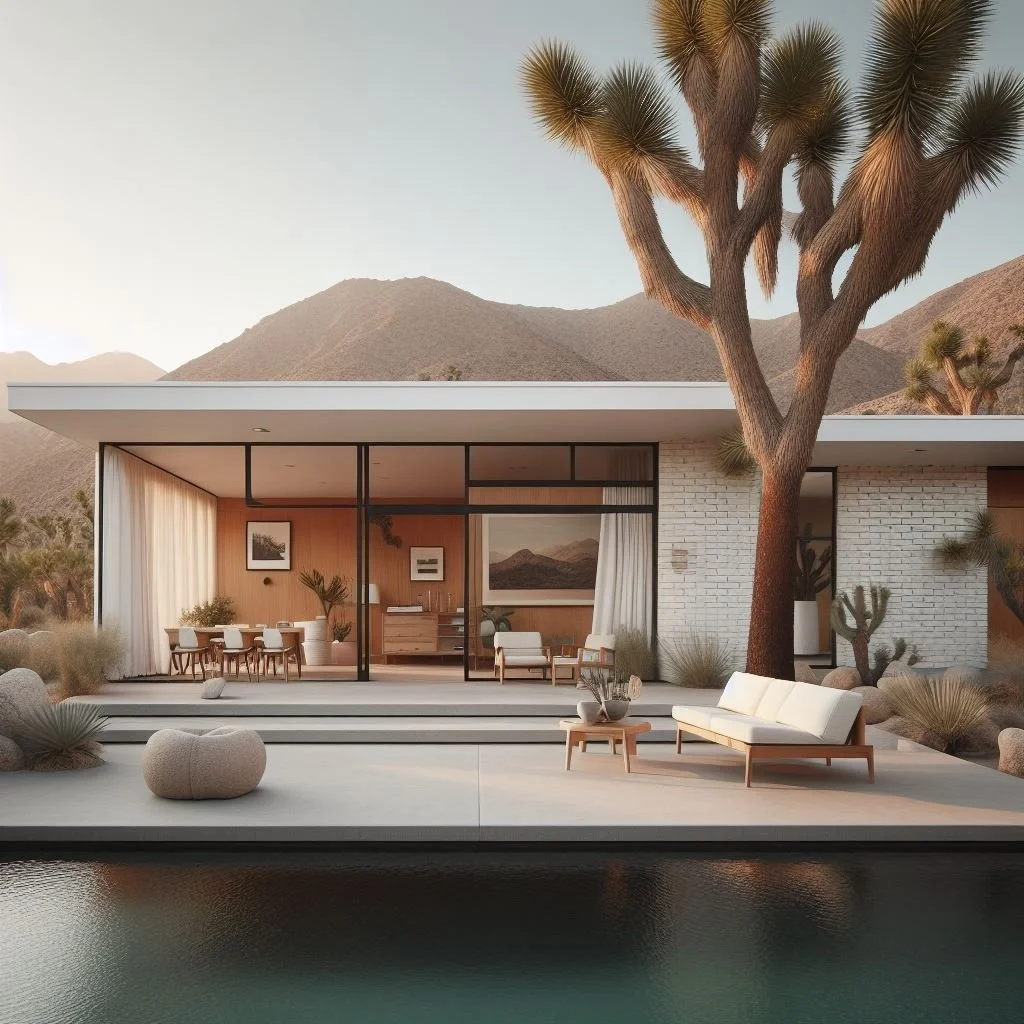
Desert Modernism: Blending Contemporary Design with the Arid Landscape
The houses you see depicted in these renders are exemplary representations of Desert Modernism, its a captivating architectural style that seamlessly integrates contemporary design principles with the unique demands and aesthetics of arid environments. This design approach is not merely about placing a modern building in a desert; it's about a thoughtful and harmonious dialogue between the built form and its natural surroundings.
Key Characteristics and How They Manifest Here:
Clean Lines and Flat Roofs: A hallmark of modernism, the buildings feature crisp, horizontal lines and prominent flat roofs. These elements contribute to a sleek, understated profile that often mimics the distant mountain horizons, rather than competing with them. The large overhangs visible are not just aesthetic; they serve a crucial passive design function, providing essential shade from the intense desert sun.
Expansive Glazing and Indoor-Outdoor Connection: Floor-to-ceiling windows and large glass panels are strategically employed to maximize natural light and blur the boundaries between interior and exterior spaces. This allows occupants to fully appreciate the dramatic desert vistas, from the rugged mountains to the unique plant life. Despite the large windows, the use of deep overhangs and glazed with specialized (Low-E) glass and triple pane windows with an inert gas fill, minimizes solar heat gain.
Materiality Reflecting the Landscape: The choice of materials is critical to Desert Modernism. We have a sophisticated palette that harmonizes with the natural environment that surrounds us.
Light-Colored Masonry/Stucco: The prevalent light-colored brickwork and textured stucco walls reflect sunlight, helping to keep the interiors cool. This also creates a striking contrast against the earthy tones of the desert.
Natural Wood Accents: Warm wood elements, particularly on soffits and possibly wall cladding, introduce a tactile quality and a touch of organic warmth that complements the starkness of the desert and the cooler tones of the masonry.
Concrete: We use concrete for pathways and structural elements providing durability and a contemporary industrial edge, while also being a practical choice for the desert climate.
Integration with Native Landscaping: The immediate surroundings are thoughtfully landscaped with drought-tolerant native plants such as cacti (saguaro and cholla and Joshua trees which are heavily protected), agave, and yucca. This not only conserves water but also softens the architectural lines and firmly grounds the structures within their ecological context. We emphasize this by further integrating what seems to be untouched sandy lot with scattered rocks and native ground covers further emphasizing this integration.
Adaptation to Climate: Beyond the aesthetic, our designs subtly incorporate passive climate control strategies. The deep roof overhangs, strategic window placement, and material choices all suggest an intentional design to mitigate the harsh desert climate, aiming for natural cooling and light without excessive energy consumption.
Understated Elegance: There's a clear sense of refined simplicity. Our architecture relies on form, proportion, and materiality rather than elaborate ornamentation. This creates a timeless and sophisticated aesthetic that feels both contemporary and deeply rooted in its location.
In essence, our homes are not just structures; they are carefully crafted sanctuaries that celebrate the stark beauty of the desert while providing comfortable and luxurious living and memory creating spaces. They embody a philosophy where architecture respects and responds to its environment, creating a powerful and harmonious blend of human ingenuity and natural grandeur.

